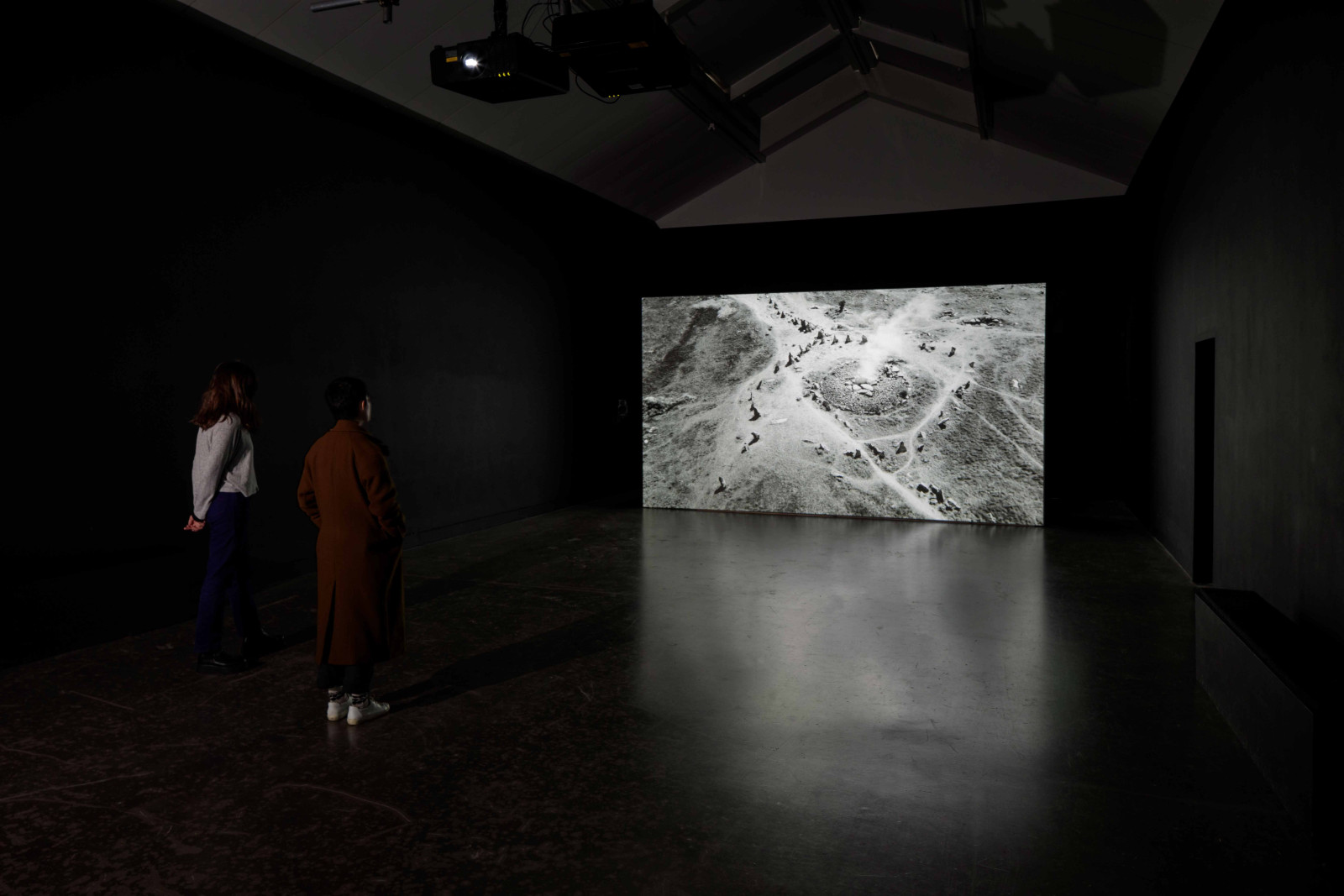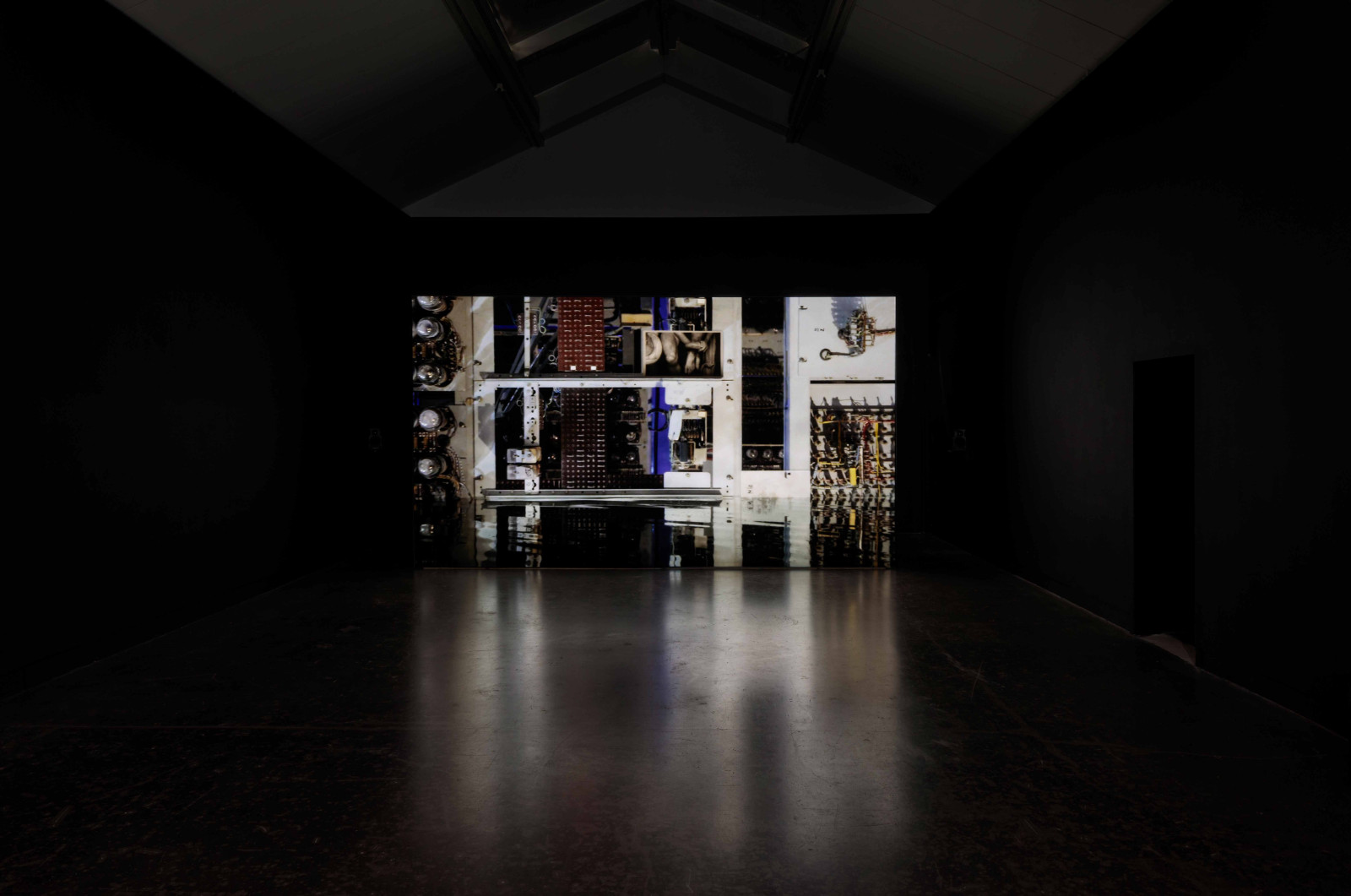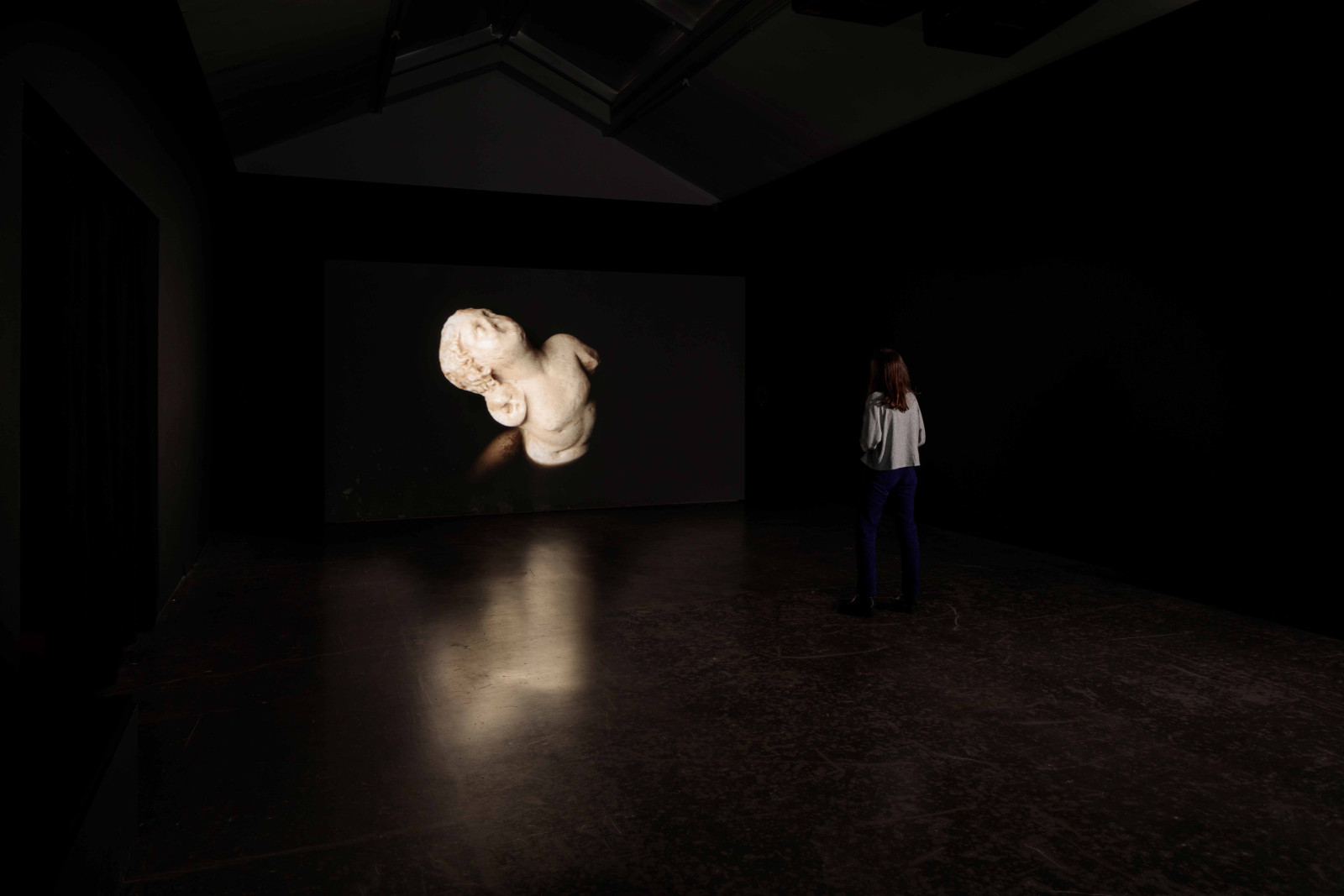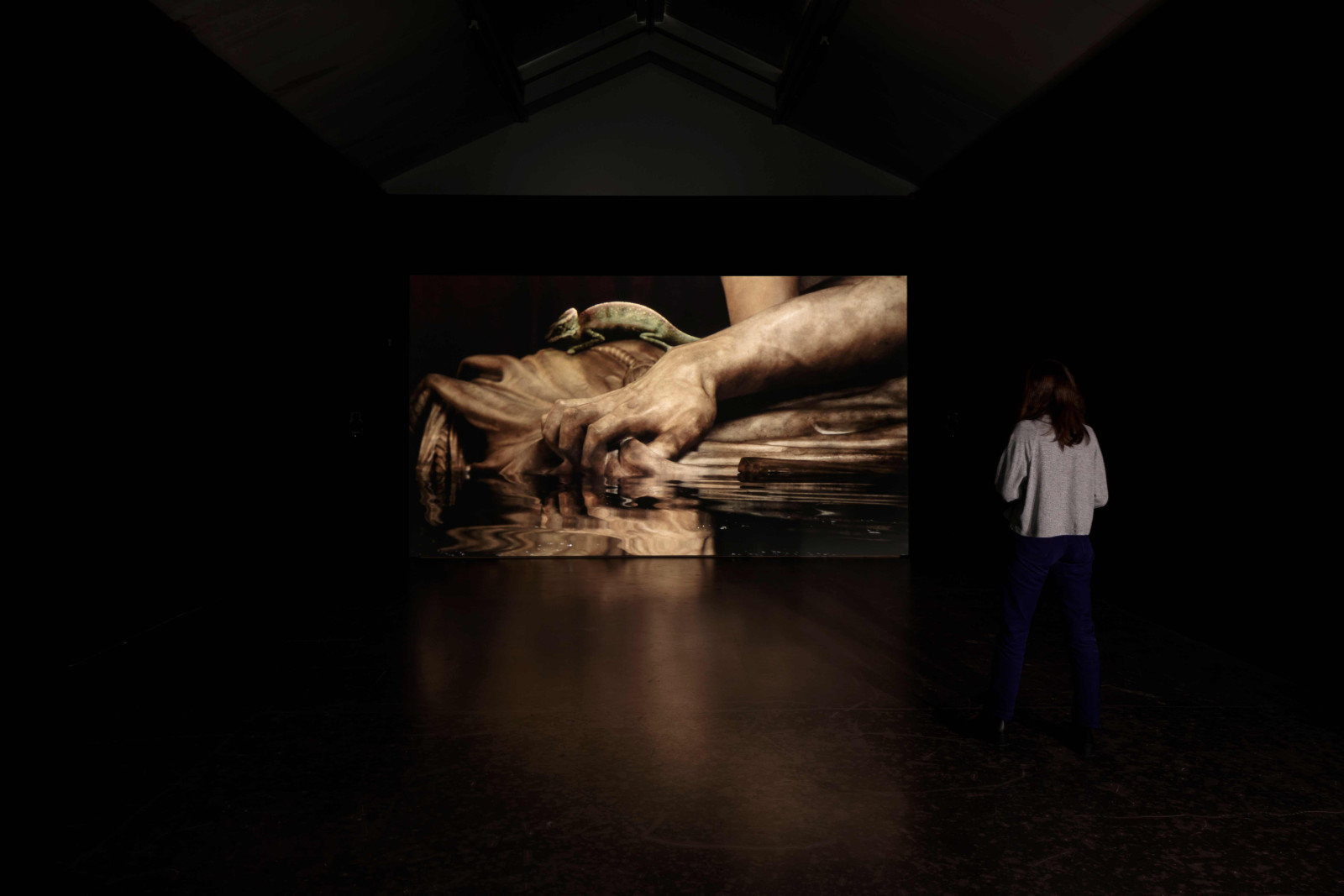An Experiment with Time 2022
Read More
An Experiment with Time derives its title from a text by the popular scientist J.W. Dunne, published in 1927. This book proposed a belief system based on precognitive dreams – a theory of parallel timelines whereby dream narratives predict future events. The film echoes this quality of dreamlike theatricality, and uses CGI to transform sites of technological, medical and religious significance into an apocalyptic strangeness. A historic medical site is portrayed submerged in water; a chameleon is the sole inhabitant of a site of computing history; a brain coral forms the centre-piece of an iconic cathedral.
Diverse histories and systems of belief are depicted in a shared state of environmental aftermath as the film weaves a dreamlike narrative around the constructs through which we have sought to understand and control our world. Interspersed with these unpeopled scenes are spectral images relating to early natural specimen collections and AI generated portraiture; here the preserved life forms of the past become apparitions for the disembodied presences of the future.
Three channel film installation, surround sound, 19:12 mins, 2022
Cameras: Feargal Ward
VFX: Enter Yes
Sound: Francesco Fabris (including ‘Three Voices’ (extracts) by Morton Feldman by permission of Universal Edition (London) Ltd; from the recording by Juliet Fraser released by Hat Hut, 2017, distributed by Outhere Music)
Voice: Mikel Murfi
Compositing: Stephen O'Connell
Grade: Donal O'Kane/Screen Scene
(Two channel iteration: 37:18 mins; Sound: Susan Stenger; Title cards: Dani Jacobs)
Excerpt: An Experiment with Time, Three channel film, 2022
Excerpt: An Experiment with Time, Three channel film, 2022

16th Lyon Biennale, manifesto of fragility, 2022, curated by Sam Bardaouil & Till Fellrath. Photo: François Deladerrière

16th Lyon Biennale, manifesto of fragility, 2022, curated by Sam Bardaouil & Till Fellrath. Photo: François Deladerrière

16th Lyon Biennale, manifesto of fragility, 2022, curated by Sam Bardaouil & Till Fellrath. Photo: François Deladerrière

CCA Glasgow, 2022 (solo), curated by Francis McKee & Alaya Ang. Photos: Ruth Clark

CCA Glasgow, 2022 (solo), curated by Francis McKee & Alaya Ang. Photos: Ruth Clark

CCA Glasgow, 2022 (solo), curated by Francis McKee & Alaya Ang. Photos: Ruth Clark

CCA Glasgow, 2022 (solo), curated by Francis McKee & Alaya Ang. Photos: Ruth Clark

CCA Glasgow, 2022 (solo), curated by Francis McKee & Alaya Ang. Photos: Ruth Clark

CCA Glasgow, 2022 (solo), curated by Francis McKee & Alaya Ang. Photos: Ruth Clark

CCA Glasgow, 2022 (solo), curated by Francis McKee & Alaya Ang. Photos: Ruth Clark

CCA Glasgow, 2022 (solo), curated by Francis McKee & Alaya Ang. Photos: Ruth Clark